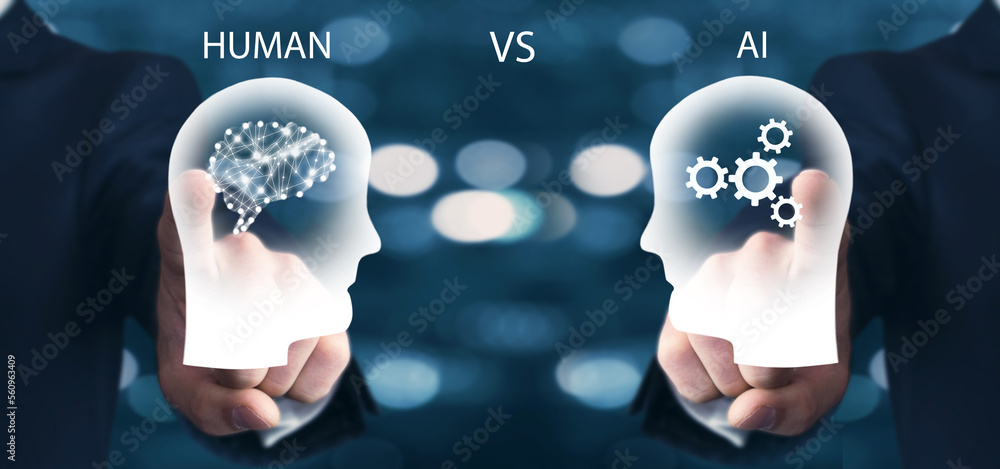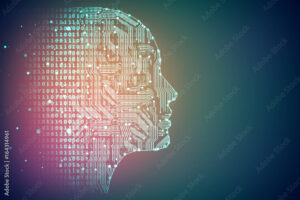
The interchange of information and ideas between individuals from various cultures and languages is made possible via translation, which has grown to be an essential component of international communication. The need for translation services has skyrocketed as the world becomes even more interconnected. Technology advancements have made translation more effective and available than ever. But as machine translation has grown in popularity, the issue of whether it can take the place of human translation has come up for discussion.
In this blog article, we’ll look at how technology affects translation and contrast human versus machine translation.
Machine Translation

The process of translating text from one language to another using software is known as machine translation. Since rule-based systems were first developed, machine translation technology has advanced tremendously, giving rise to statistical and neural machine translation. The most likely translation for a given sentence or text is determined using statistical models and algorithms that analyze linguistic trends.
Compared to human translation, machine translation has a number of benefits. It can initially quickly and accurately interpret large amounts of text in a short length of time. Second, it is affordable, which is great for businesses that frequently need to translate a lot of content. Not least of all, machine translation is trustworthy; it constantly delivers the same translation for a given text, which is especially useful for translating technical or legal documents that require accuracy.
However, machine translation has its drawbacks. Machine translation algorithms are unable to comprehend linguistic nuances like idioms, metaphors, and cultural references. This could result in challenging or inaccurate translations that do not adequately capture the sense of the source text. Additionally, machine translation can make mistakes since it cannot take the context of the text into account. Because of this, it is frequently ideal to utilize machine translation as a starting point for human translators to refine and improve.
Human Translation

Contrarily, human translation refers to the process of having a person translator translate text from one language into another. Understanding the context, nuance, and cultural allusions of the source text is necessary for human translation in order to accurately transmit the same meaning in the target language.
Human translation has a variety of advantages over computer translation. First of all, human translators are able to faithfully convey the meaning of the source text to the listener in the target language. Second, human translation is more accurate and trustworthy than machine translation for things that call for a high degree of accuracy, such as legal or medical documents. Human translators can also consider the cultural background of the text to make sure the translation is appropriate for the target audience.
Human translation does, however, have its limitations. Especially for lengthy texts, human translation can be time-consuming and expensive. Human translators are equally susceptible to error, particularly if they lack subject-matter expertise or are not native speakers of the target language.
Pros and Cons of Machine Translation Vs. Human Translation

Machine translation and human translation are two different approaches to translating text from one language to another. Both methods have their advantages and disadvantages, and the choice between them depends on various factors, such as the purpose of the translation, the target audience, and the available resources.
Pros of Machine Translation
- Speed: Machine translation is much faster than human translation, and it can translate large volumes of text in a short amount of time.
- Cost-effective: Machine translation is often more cost-effective than human translation, especially for businesses that need to translate large volumes of text on a regular basis.
- Consistency: Machine translation provides consistent translations for the same text, which is useful for technical or legal documents that require precision.
- Accessibility: Machine translation is more accessible to people who cannot afford human translation services or who need quick translations for personal use.
Cons of Machine Translation
- Accuracy: Machine translation is not always accurate, and it can produce mistranslations, especially for idioms, metaphors, and cultural references.
- Context: Machine translation cannot take into account the context of the text, which can lead to mistranslations and inaccuracies.
- Style: Machine translation may not be able to capture the style or tone of the original text, which can make the translation sound unnatural or awkward.
- Limitations: Machine translation is limited by the quality and availability of the training data, and it cannot always handle complex language structures or technical terminology.
Pros of Human Translation
- Accuracy: Human translation is generally more accurate than machine translation, especially for texts that require a high degree of precision, such as legal or medical documents.
- Context: Human translation can take into account the context of the text, including cultural references, idioms, and metaphors.
- Style: Human translation can capture the style and tone of the original text, making the translation sound natural and appropriate for the target audience.
- Flexibility: Human translators can adapt to the specific needs of the client and can provide customized translations according to the target audience and purpose of the translation.
Cons of Human Translation
- Cost: Human translation can be expensive, especially for large volumes of text or for specialized fields that require subject-matter expertise.
- Time-consuming: Human translation can take a significant amount of time, especially for complex texts or for languages with different scripts or writing systems.
- Availability: Human translators may not be available for all languages or for all types of texts, and finding a qualified translator can be challenging.
- Subjectivity: Human translation can be influenced by the translator’s personal style, preferences, and biases, which can affect the quality of the translation.
Conclusion
In conclusion, both human and machine translation have advantages and disadvantages. Although machine translation is quick, effective, and economical, it cannot accurately capture the subtleties of language and context. Contrarily, human translation is accurate and trustworthy but can also be time- and money-consuming.
Machine translation will probably get better as technology develops, but it is unlikely that it will completely take the role of human translation. The optimal strategy is to employ machine translation as a foundation, which human translators may then hone and improve. The accuracy, cultural appropriateness, and efficacy of the translations will be guaranteed by the combination of human skill and technology. Stay Tuned for new updates.

Post a Comment